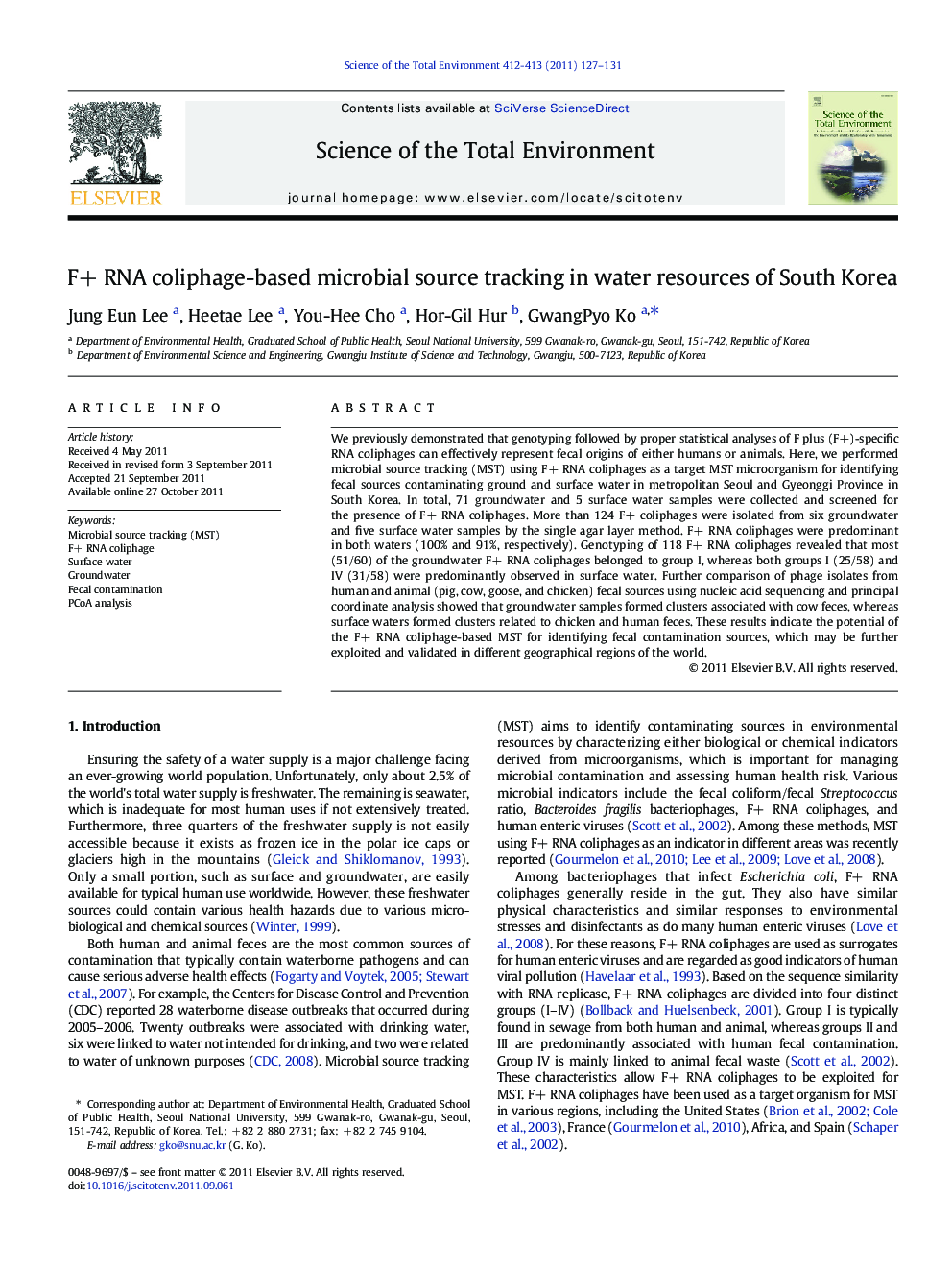| Article ID | Journal | Published Year | Pages | File Type |
|---|---|---|---|---|
| 4429707 | Science of The Total Environment | 2011 | 5 Pages |
We previously demonstrated that genotyping followed by proper statistical analyses of F plus (F+)-specific RNA coliphages can effectively represent fecal origins of either humans or animals. Here, we performed microbial source tracking (MST) using F+ RNA coliphages as a target MST microorganism for identifying fecal sources contaminating ground and surface water in metropolitan Seoul and Gyeonggi Province in South Korea. In total, 71 groundwater and 5 surface water samples were collected and screened for the presence of F+ RNA coliphages. More than 124 F+ coliphages were isolated from six groundwater and five surface water samples by the single agar layer method. F+ RNA coliphages were predominant in both waters (100% and 91%, respectively). Genotyping of 118 F+ RNA coliphages revealed that most (51/60) of the groundwater F+ RNA coliphages belonged to group I, whereas both groups I (25/58) and IV (31/58) were predominantly observed in surface water. Further comparison of phage isolates from human and animal (pig, cow, goose, and chicken) fecal sources using nucleic acid sequencing and principal coordinate analysis showed that groundwater samples formed clusters associated with cow feces, whereas surface waters formed clusters related to chicken and human feces. These results indicate the potential of the F+ RNA coliphage-based MST for identifying fecal contamination sources, which may be further exploited and validated in different geographical regions of the world.
► F+ RNA coliphage-based MST was applied for identifying fecal contamination sources of both groundwater and surface water. ► More than 124 F+ coliphages were isolated from either 71 groundwater or 5 surface water samples. ► Fecal origin of contaminated water could be identified from PCoA analysis using nucleic acid sequences of coliphages.
